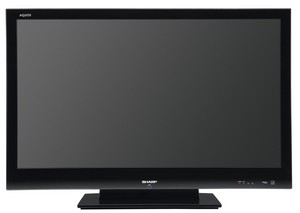Sharp unveils new LED-backlit Aquos LCD HDTVs


The new models all support 1080p HD, are available this month, and come in four sizes: the 32-inch LC-32LE700UN ($1,099.99), 40-inch LC-40LE700UN ($1,699.99), 46-inch LC-46LE700UN ($2,199.99), and 52-inch LC-52LE700UN ($2,799.99). Most interesting is that Sharp added LED tech to a smaller-sized set, which not only gives you a glimpse of the near future when LED-backlighting becomes a standard feature on most LCDs, but also put an LED TV right around the $1,000 mark. (Amazon is already listing it for $999.99).
One feature the LC-32LE700UN lacks is Aquos Net, which is Sharp's version of a connected-TV service, though it currently can't touch the services that Vizio will be offering with its networked sets later in the year (including built-in 802.11n Wi-Fi). You can check weather, stock prices, and traffic as well as access NBCU content using Aquos Net, but there's no Netflix or Pandora widget available. One cool touch, however, is Aquos Advantage Live, which allows a Sharp customer service rep to remotely adjust your TV settings while you're on the phone with him or her. All of the sets lack local dimming, which allows the TV to turn off certain backlights when they're not needed to boost contrast levels; Sharp says local dimming will be available on select future sets, according to Gizmodo.
While LED TVs are becoming more affordable, they're still pricier than other LCDs. But that just means that next year will bring many more LED sets skirting that $1,000 price point.